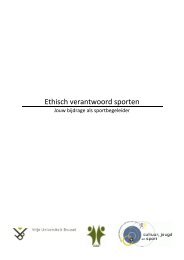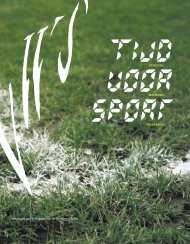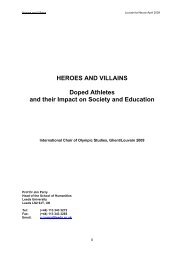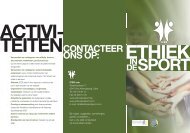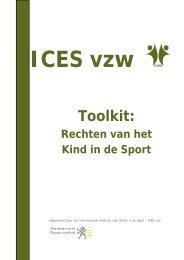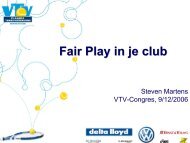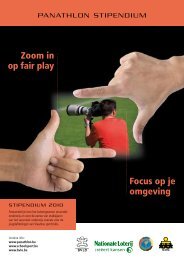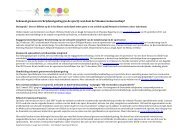Part 3 GLOBAL ISSUES: HARASSMENT AND ABUSE RESEARCH
Part 3 GLOBAL ISSUES: HARASSMENT AND ABUSE RESEARCH
Part 3 GLOBAL ISSUES: HARASSMENT AND ABUSE RESEARCH
You also want an ePaper? Increase the reach of your titles
YUMPU automatically turns print PDFs into web optimized ePapers that Google loves.
With regards to sexual relationships with athletes above the age of consent,<br />
opinions ranged from “it would be totally inappropriate” to “it’s a question of civil<br />
liberties.” In general, the coaches expressed holding themselves to a higher<br />
standard of behaviour compared with how they would judge their fellow coaches.<br />
Specifically, some coaches seemed willing to adapt to the pressures generated by<br />
greater awareness of child sexual abuse and the emergence of child protection<br />
policies in sport by reducing opportunities to develop close relationships with<br />
athletes. Coaches also reported that the potential for false accusations, power<br />
imbalances and negative performance consequences influenced their own beliefs<br />
about whether or not a relationship would be appropriate. However, awareness of<br />
career-damaging false accusations and attempts at maintaining civil liberties<br />
contributed to the coaches’ stated reluctance to intervene with other coaches when<br />
suspicions of inappropriate coach-athlete relationships arise.<br />
Role conflict and role ambiguity<br />
As we analysed the data from the focus groups, we became aware that the<br />
problem most relevant to the research participants was not how they constructed<br />
and distinguished appropriate from inappropriate sexual relationships but how child<br />
protection initiatives were affecting their roles as swimming coaches. Following the<br />
grounded theory methodology, 21, 25, 26 we started with a broad focus allowing the<br />
area of concern most important to the coaches to emerge from the data. This core<br />
category was labeled role conflict and role ambiguity to reflect how the coaches<br />
were questioning their role as a coach after the development of child protection<br />
guidelines and increased public scrutiny. The definitions of Kahn and his colleagues<br />
27<br />
were used for role conflict and role ambiguity, with the former referring to<br />
conflicting role expectations and the later referring to insufficient information about<br />
role expectations. For example, in one of the focus groups, a coach stated,<br />
There are going to be some athletes that could be very great athletes but<br />
they will fail as athletes, because we will fail them as coaches. Because, we<br />
will not be coaching them as to how they need to be coached with some of<br />
these rules and regulations.<br />
Role conflict and role ambiguity thus became the centre of our grounded<br />
theory paradigm model 21 which provided the structure for reporting the findings from<br />
64<br />
64



